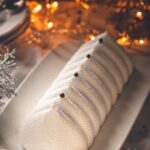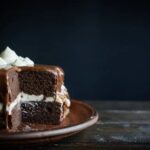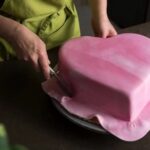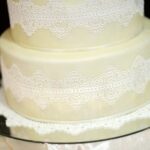If you’ve ever wondered how to decorate a cake with icing sugar for beginners, you’re in the right place. Decorating a cake with icing sugar is not only enjoyable but also a versatile and simple way to add a special touch to any occasion. Whether it’s for a birthday, anniversary, or just for fun, learning the art of cake decoration can be a rewarding experience for beginners.
Using icing sugar allows for endless creativity and customization, making it an ideal medium for those new to cake decorating. With the right tools and techniques, you can transform a simple cake into a stunning centerpiece that will impress both friends and family. In this article, we’ll explore the reasons why decorating with icing sugar is perfect for beginners and provide essential tips to get started on your cake decorating journey.
From understanding the basic tools and ingredients needed to choosing the right type of cake for decoration, we’ll cover all aspects of getting started with icing sugar decor. You’ll also learn about essential techniques such as piping, borders, and simple designs to create professional-looking results with minimal experience. So roll up your sleeves and get ready to embrace your creativity as we dive into the world of decorating cakes with icing sugar.
Getting Started
When it comes to decorating a cake with icing sugar, having the right tools and ingredients is key to achieving professional-looking results. As a beginner, it’s important to start with the basics and gradually build your collection of cake decorating supplies. Here are some essential tools and ingredients you will need to get started:
- Offset spatula: This tool is essential for spreading icing smoothly on the cake surface and creating clean edges.
- Piping bags and tips: Invest in a variety of piping tips to create different designs and textures with the icing sugar.
- Cake turntable: A turntable makes it easier to evenly spread icing onto the cake and provides better control when decorating.
- Icing sugar (confectioner’s sugar): This finely ground sugar is perfect for creating smooth, creamy, and delicious frosting for your cakes.
- Food coloring: Having a set of gel-based food colors allows you to customize the icing in various shades for decoration.
For those wondering where to find these items, specialty baking stores, craft stores, or online retailers are great places to start. Additionally, many basic tools can be found at local kitchen supply stores or even general retail outlets. As you continue practicing your cake decorating skills, you may want to expand your collection by adding more advanced tools and ingredients based on your specific preferences and needs.
Choosing the Right Cake
When it comes to decorating a cake with icing sugar, choosing the right type of cake is crucial for achieving the best results. For beginners, it’s important to consider several factors when selecting a cake that will work well with icing sugar decoration.
First and foremost, beginners should take into account the flavor of the cake. Whether it’s chocolate, vanilla, red velvet, or any other flavor, the taste of the cake should complement the icing sugar design. For example, a rich chocolate cake may pair well with vibrant and colorful icing decorations.
In addition to flavor, texture is another important consideration. A moist and tender cake provides a smooth canvas for icing designs, while a dense and crumbly cake may pose challenges when it comes to achieving clean and precise decorations. It’s advisable for beginners to start with cakes that have a softer texture for ease of decorating.
Furthermore, the size of the cake matters when it comes to decorating with icing sugar. For beginners, working with smaller cakes such as single-layer rounds or cupcakes can be more manageable and less overwhelming than larger tiered cakes. As skills improve, decorators can gradually progress to larger cakes for more elaborate designs.
By carefully considering these tips and factors when choosing a cake for icing sugar decoration, beginners can set themselves up for success in creating beautifully adorned confections. With the right cake as a foundation, novice decorators can confidently embark on their creative journey in cake decorating.
| Cake Considerations | Importance |
|---|---|
| Flavor | Complementing icing design |
| Texture | Ease of decorating |
| Size | Manageability for beginners |
Preparing the Cake
Leveling the Cake
Before diving into the decoration process with icing sugar, it’s crucial to ensure that the cake itself is well-prepared. This includes leveling the cake layers to create a smooth and even surface for decorating. To achieve this, use a long, serrated knife to carefully slice off any uneven or domed portions of the cake. Take your time and work slowly to avoid removing too much of the cake and resulting in an uneven base.
Adding a Crumb Coat
Once the cake layers are leveled, it’s essential to apply a crumb coat before moving on to the final icing stage. A crumb coat is a thin layer of frosting that seals in any loose crumbs and provides a smooth foundation for the decorative icing. Simply spread a thin layer of frosting over the entire cake, ensuring that it covers any exposed edges and fills in any gaps between layers.
Ensuring a Smooth Surface
After applying the crumb coat, it’s important to allow it to set before adding the final layer of decorative icing sugar. To ensure a smooth surface for your decorations, use an offset spatula or bench scraper to gently smooth out any imperfections in the frosting.
Take your time during this step, as creating an even and flawless surface will elevate the overall appearance of your decorated cake. Once you’re satisfied with the smoothness of the surface, your cake will be ready for adding beautiful designs and patterns with icing sugar.
Basic Icing Techniques
Decorating a cake with icing sugar can seem daunting for beginners, but with some basic techniques, it can be an enjoyable and rewarding experience. One of the simplest and most versatile methods for beginners is piping, which involves using a pastry bag to apply the icing in various designs and patterns. This technique allows for creativity and personalization while being relatively easy to master.
Borders are another fundamental icing technique that can add a professional touch to your cake. Using different piping tips, beginners can create simple borders such as shells, rosettes, or zigzags that can elevate the overall look of the cake. These borders not only serve as decorative elements but also help keep the icing in place and provide a clean finish to the edges of the cake.
For those who prefer an even easier approach, spreading the icing with a spatula or knife in smooth, even layers is a beginner-friendly alternative. This method may not offer as much detail as piping or creating borders, but it still allows for simple designs and a polished appearance. It’s a great starting point for those new to cake decorating with icing sugar.
| Technique | Description |
|---|---|
| Piping | Using different pastry tips to create designs on the cake |
| Borders | Creating decorative edges around the top and bottom of the cake |
| Spreading | Using a spatula or knife to apply the icing in smooth layers |
Advanced Techniques
So you’ve mastered the basic icing techniques and are ready to challenge yourself with more advanced skills. Decorating a cake with icing sugar offers a wide range of possibilities for creating intricate designs, shapes, and patterns. Here are some advanced techniques to take your cake decoration skills to the next level:
- Fondant Decorations: Fondant is a versatile icing that can be rolled out and molded into various shapes and designs. Consider using fondant to create 3D figures, flowers, or delicate lace patterns to adorn your cake.
- Piping Techniques: Experiment with different piping tips and techniques to create detailed embellishments on your cake. Practice piping intricate borders, written messages, or intricate lace designs for a show-stopping finish.
- Royal Icing Designs: Royal icing is perfect for creating fine details and delicate decorations on cakes. Try your hand at piped filigree designs, intricate lacework, or even freehand painting with royal icing for a stunning artistic touch.
With these advanced techniques, it’s important to practice patience and precision, as they may require more time and attention to detail. As you continue to refine your skills, don’t be afraid to experiment with new ideas and methods to further enhance your cake decorating abilities.
Remember that practice makes perfect, so keep honing your craft and embracing creativity as you explore the world of cake decorating with icing sugar. The possibilities are endless, and each creation is a chance to showcase your unique talent and style. Have fun with the process and enjoy watching your skills evolve as you continue on your cake decorating journey.
Troubleshooting
When decorating a cake with icing sugar, it’s common for beginners to encounter some challenges along the way. However, with the right knowledge and techniques, these mistakes can easily be fixed to achieve a polished finish. One of the most common issues that beginners face is air bubbles in the icing.
This can result in an uneven and unattractive surface. To fix this problem, gently tap the cake with a spatula or smooth tool to release the air bubbles and create a smoother finish.
Another common mistake is icing that is too runny or too thick. If the icing is too runny, it will not hold its shape when piped onto the cake, while icing that is too thick may be difficult to spread evenly.
To fix runny icing, you can add more powdered sugar gradually until you reach the desired consistency. On the other hand, if the icing is too thick, you can add small amounts of water or milk until it reaches the right thickness.
Additionally, uneven piping and borders are also common problems for beginners when decorating a cake with icing sugar. This can detract from the overall appearance of the cake. To fix this issue, practice piping on a separate surface before applying it to the cake to improve your technique and achieve more consistent results. Taking your time and focusing on steady hand movements will also help in creating neater and more uniform designs.
By addressing these common mistakes and learning how to fix them, beginners can feel more confident and empowered in their cake decorating skills. Troubleshooting these issues will ultimately lead to better results and a more enjoyable experience when using icing sugar for cake decoration.
Final Touches and Presentation
Once you have completed the icing sugar decoration on your cake, it’s time to add the final touches and present it in an appealing manner. The way a cake is presented can significantly enhance its overall aesthetic and make it more enticing to serve or display. Here are some tips for making your cake stand out:
Adding Decorative Elements
Consider enhancing the look of your cake with additional decorative elements such as edible flowers, sprinkles, chocolate shavings, or fresh fruit. These elements can add texture, color, and visual interest to your cake, making it more visually appealing.
Utilizing Cake Toppers
Cake toppers are a simple yet effective way to elevate the presentation of your cake. Whether it’s a personalized message, figurines, or themed decorations, choosing the right cake topper can tie in with the overall theme or occasion of the cake.
Choosing the Right Display
The way you present your decorated cake can also make a difference. Consider using a cake stand or platter that complements the design and colors of the cake. Additionally, using decorative doilies or colorful napkins underneath the cake can further enhance its visual appeal.
As you put the final touches on your decorated cake and prepare to showcase it, remember that presentation plays a significant role in how people perceive your creation. Taking the time to add those extra details and present the cake thoughtfully can truly make it stand out as a centerpiece at any event or gathering.
Conclusion
In conclusion, decorating a cake with icing sugar is a delightful and rewarding experience, especially for beginners. The process of adorning a plain cake with beautiful designs and patterns offers a sense of accomplishment and allows individuals to unleash their creativity. Whether it’s for a special occasion or just for fun, cake decorating with icing sugar is a wonderful way to bring joy to oneself and others through the presentation of a sweet treat.
As beginners progress in their skills and knowledge of cake decorating, they will find themselves enjoying the process more and more. It’s important to embrace creativity and not be afraid to experiment with different designs, colors, and techniques. Each cake presents an opportunity for learning and improvement, and the journey towards mastery can be incredibly fulfilling.
While it’s natural to encounter challenges along the way, perseverance and practice will ultimately lead to greater confidence and skill in cake decorating. With dedication and patience, beginners can elevate their abilities from basic icing techniques to advanced designs, bringing their visions to life on each beautifully decorated cake. In the end, the joy of creating edible works of art with icing sugar is what makes the journey truly worthwhile.
Frequently Asked Questions
How Do You Ice a Cake With Icing Sugar for Beginners?
Icing a cake with icing sugar for beginners involves starting with a completely cooled cake. Then, use a sifter or fine-mesh sieve to evenly sprinkle icing sugar over the top of the cake. Alternatively, you can use stencils to create decorative designs with the icing sugar.
How Do You Sprinkle Icing Sugar on a Cake?
Sprinkling icing sugar on a cake is a simple process that can add a delightful touch to any dessert. Once the cake is completely cooled, use a sifter or fine-mesh sieve to evenly sprinkle the icing sugar over the cake’s surface. You can also use stencils to create intricate designs with the icing sugar.
How Do You Make a Plain Cake Look Fancy?
Making a plain cake look fancy can be achieved through various methods. One option is to add fresh fruit or edible flowers as a colorful and visually appealing garnish.
Another way is to layer the cake with flavored fillings or frostings, and then decorate it using piping techniques, sprinkles, or even edible glitter for an elegant touch. Additionally, incorporating different textures like nuts or chocolate shavings can elevate the look of a plain cake and make it more visually interesting for any special occasion.

Welcome to my blog about home and family. This blog is a place where I will share my thoughts, ideas, and experiences related to these important topics. I am a stay-at-home mom with two young children. I hope you enjoy reading it! and may find some helpful tips and ideas that will make your home and family life even better!





